Our verdict
Pros
- Extremely lightweight
- Swift and race ready ride
- Responsive midsole
- Protective cushioning
- Subtle but effective stability features
- Traditional low stack geometry
- Feels flexible and agile
- Performance fit with an accommodating toebox
- Grippy and durable outsole
Cons
- Lackluster rearfoot lockdown
- Higher than advertised drop
- Not for severely over pronating strides
Audience verdict
- Top 13% in road running shoes
- Top 7% in Brooks running shoes
Comparison
The most similar running shoes compared
+ + Add a shoe | |||||
|---|---|---|---|---|---|
| Audience score | 90 Great! | 90 Great! | 84 Good! | 90 Great! | |
| Price | $150 | $180 | $135 | $130 | |
| Pace | Tempo | Daily runningTempo | Daily runningTempo | Daily runningTempo | |
| Shock absorption | - | Moderate | Moderate | High | |
| Energy return | - | Moderate | Low | Moderate | |
| Traction | - | Moderate | High | High | |
| Arch support | Stability | Neutral | Neutral | Neutral | |
| Weight lab Weight brand | 8 oz / 228g 8 oz / 228g | 8.6 oz / 244g 8.6 oz / 244g | 7.7 oz / 217g 7.6 oz / 215g | 8.6 oz / 245g 8.4 oz / 238g | |
| Lightweight | ✓ | ✓ | ✓ | ✓ | |
| Drop lab Drop brand | 9.9 mm 8.0 mm | 9.4 mm 10.0 mm | 5.9 mm 5.0 mm | 8.2 mm 9.0 mm | |
| Strike pattern | HeelMid/forefoot | HeelMid/forefoot | Mid/forefoot | HeelMid/forefoot | |
| Size | True to size | True to size | Half size small | Half size small | |
| Midsole softness | Soft | Soft | Soft | Balanced | |
| Difference in midsole softness in cold | Big | Normal | Small | Small | |
| Toebox durability | Decent | Decent | Bad | Bad | |
| Heel padding durability | Good | Good | Good | Good | |
| Outsole durability | Good | Decent | Decent | Decent | |
| Breathability | Breathable | Moderate | Breathable | Breathable | |
| Width / fit | Narrow | Medium | Wide | Wide | |
| Toebox width | Medium | Medium | Wide | Medium | |
| Stiffness | Moderate | Moderate | Moderate | Moderate | |
| Torsional rigidity | Moderate | Moderate | Stiff | Moderate | |
| Heel counter stiffness | Moderate | Stiff | Moderate | Flexible | |
| Heel lab Heel brand | 28.6 mm 28.0 mm | 33.0 mm 34.0 mm | 32.8 mm 34.5 mm | 34.9 mm 35.0 mm | |
| Forefoot lab Forefoot brand | 18.7 mm 22.0 mm | 23.6 mm 24.0 mm | 26.9 mm 29.5 mm | 26.7 mm 26.0 mm | |
| Widths available | Normal | Normal | Normal | NormalWide | |
| Orthotic friendly | ✓ | ✓ | ✓ | ✓ | |
| Season | SummerAll seasons | All seasons | SummerAll seasons | SummerAll seasons | |
| Removable insole | ✓ | ✓ | ✓ | ✓ | |
| Ranking | #70 Top 11% | #45 Top 12% | #247 Bottom 34% | #47 Top 13% | |
| Popularity | #416 Bottom 37% | #42 Top 12% | #131 Top 35% | #155 Top 42% |
Who should buy
We recommend the Brooks Hyperion GTS as a great choice for runners who:
- Have a slightly pronating stride and need a lightweight shoe with subtle stability features that's responsive and speedy.
- Prefer a race-ready shoe that’s non-plated and boasts a more traditional, low stack midsole geometry that’s flexible and comfy.
- Want a shoe that’s got a snug, racer fit that’s still roomy enough for natural toe splay.
Who should NOT buy
With its narrower than average midsole at the heel, the Hyperion GTS won’t feel as stable for heel strikers as their forefoot striking counterparts despite the shoe’s stability features. For heel striking runners in need of a more stable landing platform, we recommend the ASICS 2000 11.
For runners looking to melt away the mile markers with a shoe that has cushioning better suited to long distance efforts, we suggest checking out the Brooks Launch GTS or the Hoka Arahi 6 instead.
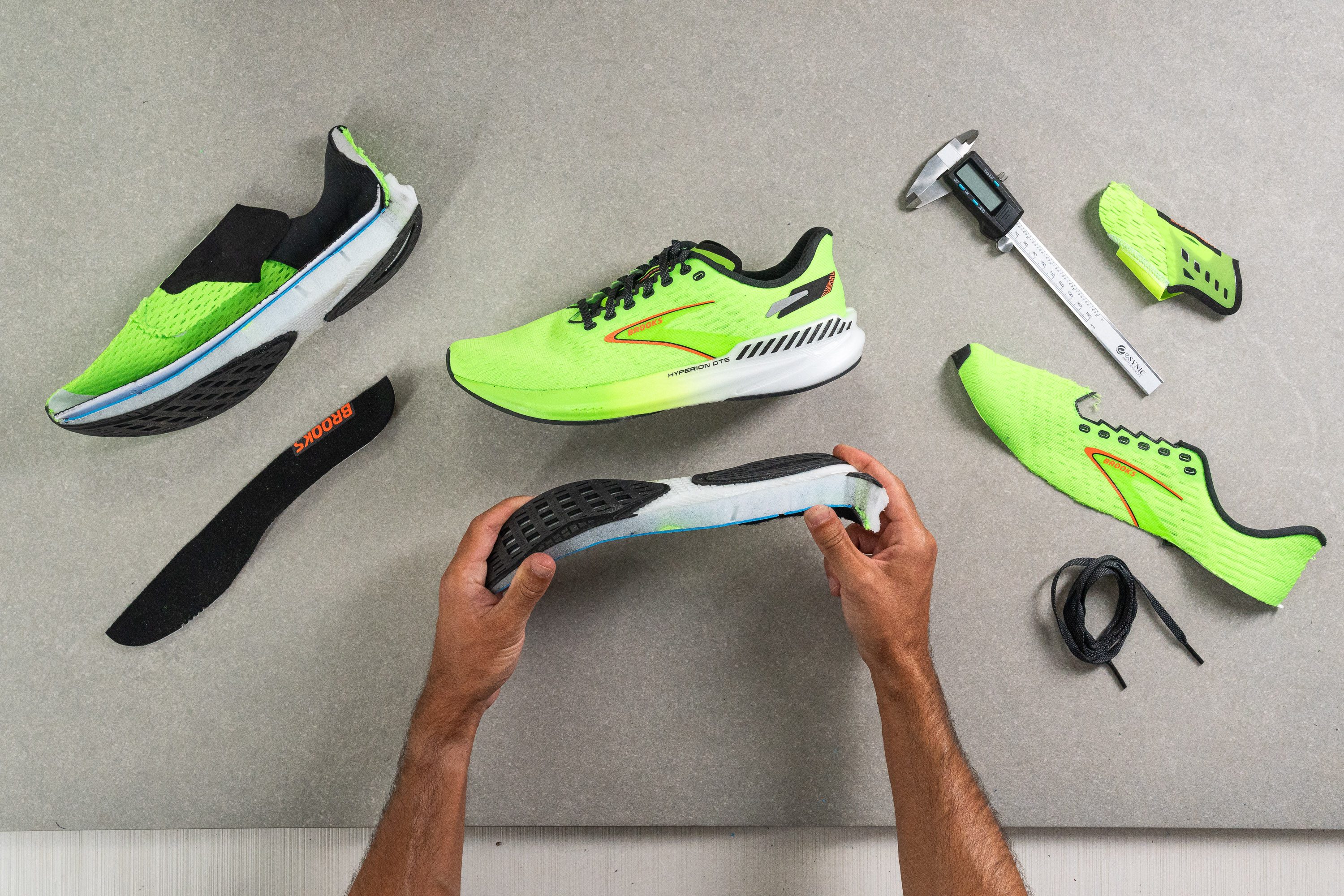
Cushioning
Heel stack
We measured the Hyperion GTS’ heel stack with our caliper to be 28.6 mm high. This is quite a bit shorter than our current lab average and lends itself to the shoe’s more traditional, low stack geometry. This gave us a good amount of ground feel during our test runs while still providing enough cushioning that we felt well protected from impact.
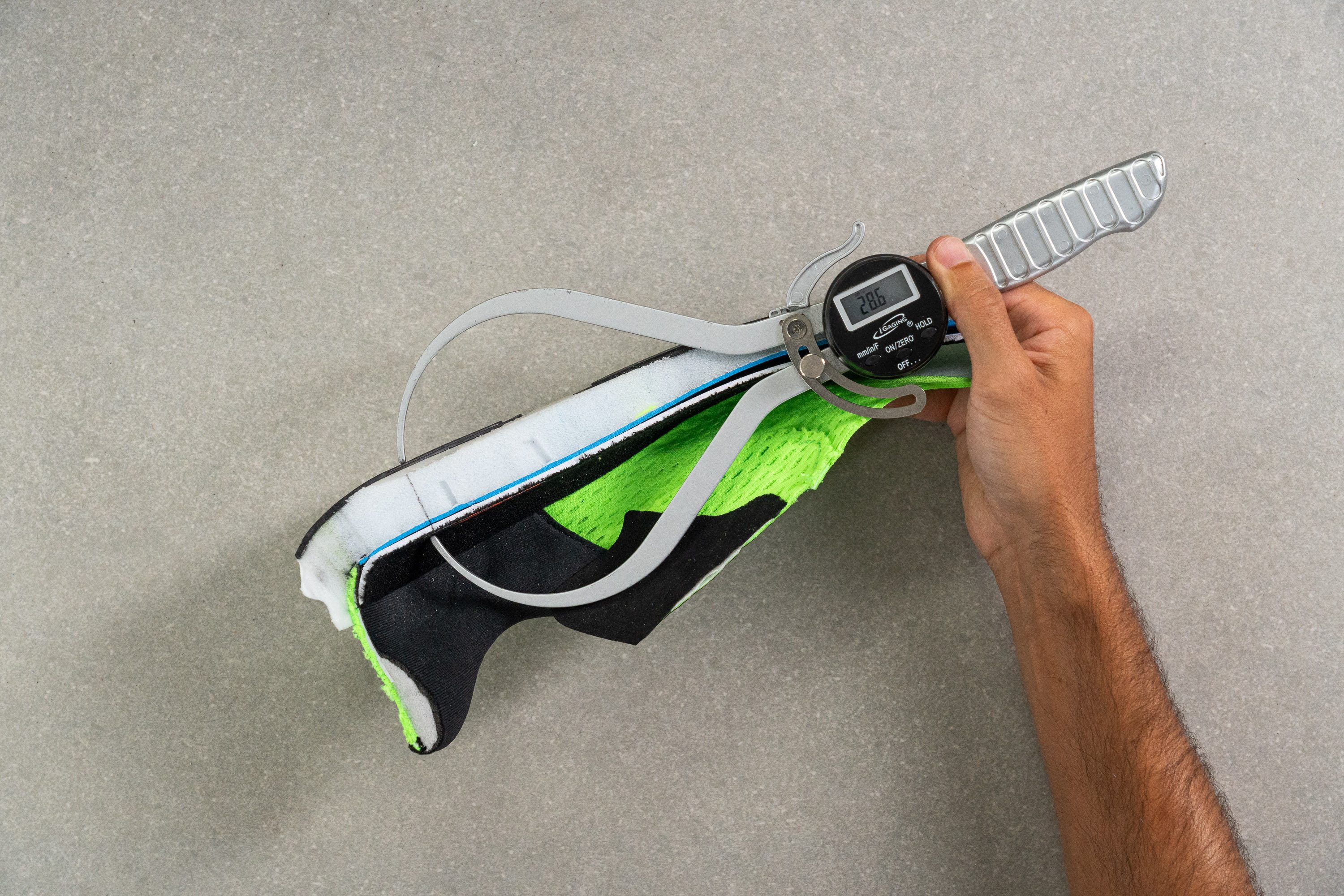
| Hyperion GTS | 28.6 mm |
| Average | 34.8 mm |
Forefoot stack
Continuing the low stack motif, the Hyperion GTS’ stack at the forefoot is only 18.6 mm high. This is also significantly shorter than our lab average and contributes to the Hyperion GTS’ natural feeling ride that provided us with lots of ground feel underfoot and adequate levels of cushioning during our test runs.
It’s only towards the end of long haul efforts did we start to feel the midsole to let us down. For long distance runners who prefer having more protective foam underfoot, we recommend the Brooks Launch GTS instead.
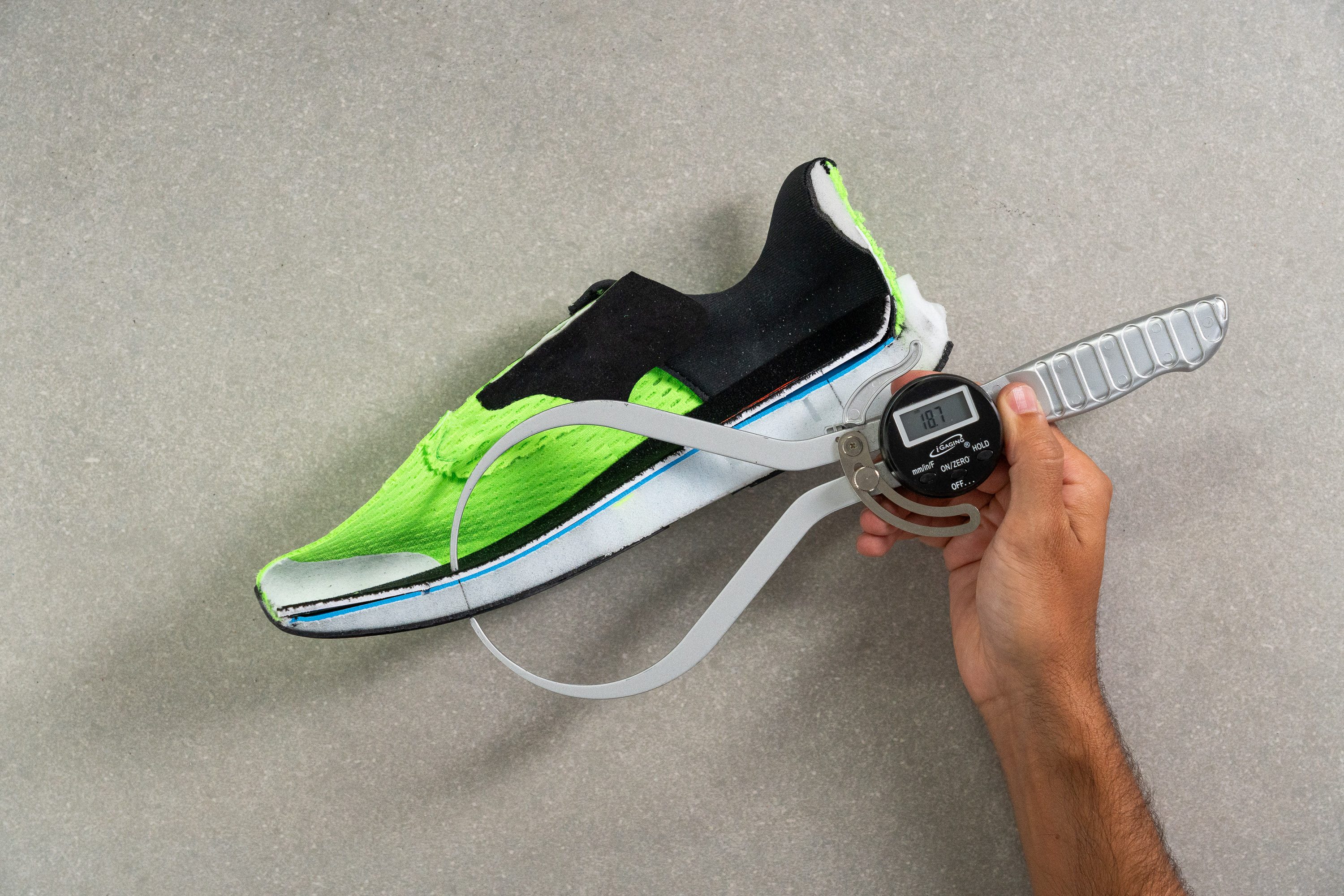
| Hyperion GTS | 18.7 mm |
| Average | 26.2 mm |
Drop
While stated to have a drop of 8 mm, the difference in our stack measurements leaves the Hyperion GTS with a heel drop of 9.9 mm. This seemingly minute difference will be noticeable to more experienced runners as it puts the Hyperion GTS more in the category of high drop shoes. These tend to favor heel striking runners as it promotes more efficient heel-to-toe transitions while shifting the brunt of our load to the hips and knees. For runners in the market for a true mid-drop shoe that’s also capable of setting PRs, we suggest checking out the Saucony Kinvara 14 instead.
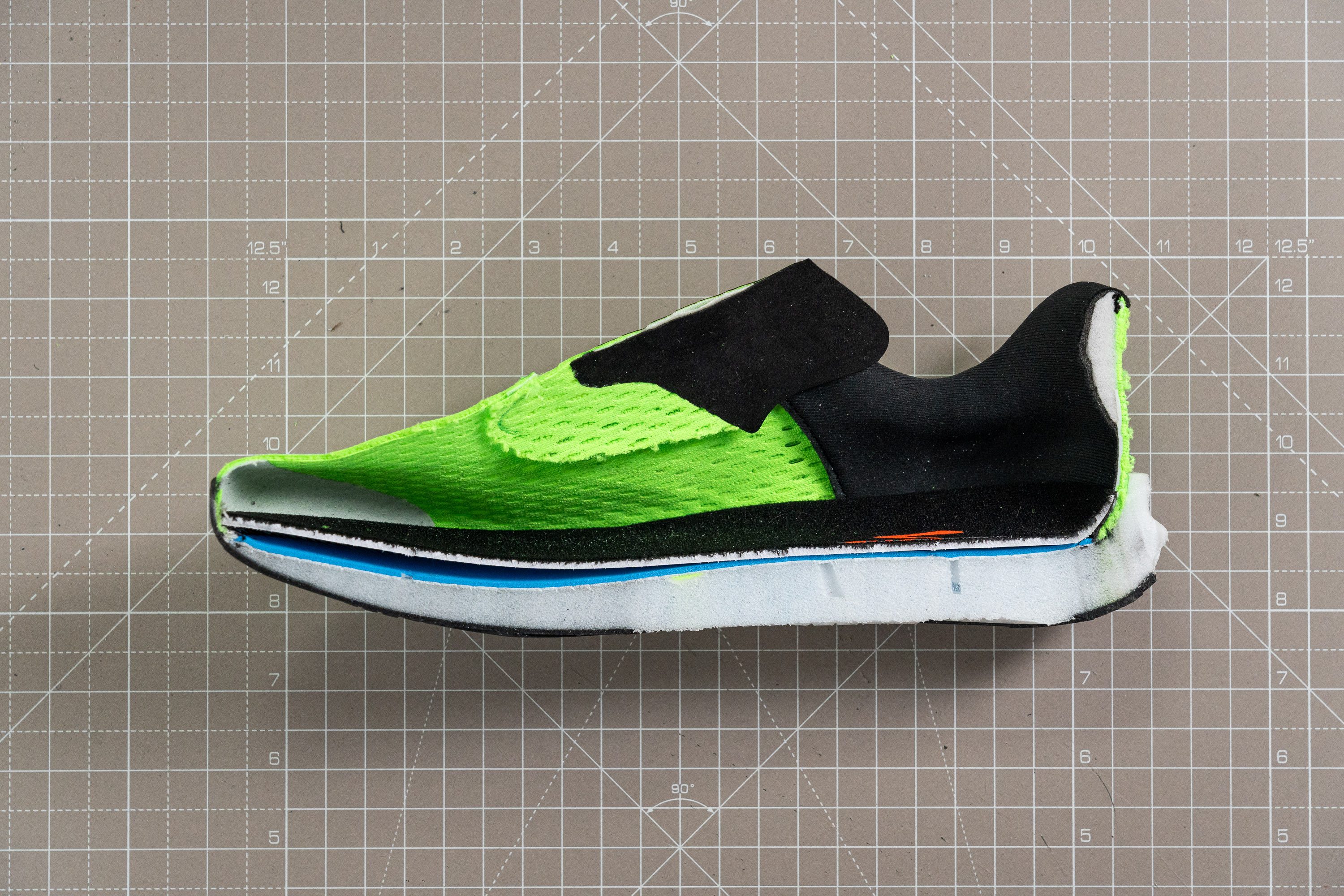
We’ve found many similar discrepancies with brand-stated drop height over the course of testing shoes in our lab, so much so that we have an article that investigates the matter using data we’ve measured so far.
| Hyperion GTS | 9.9 mm |
| Average | 8.6 mm |
Midsole softness
We used our durometer to measure how soft the Hyperion GTS’ DNA Flash midsole foam is and got a reading of 18.4 HA.
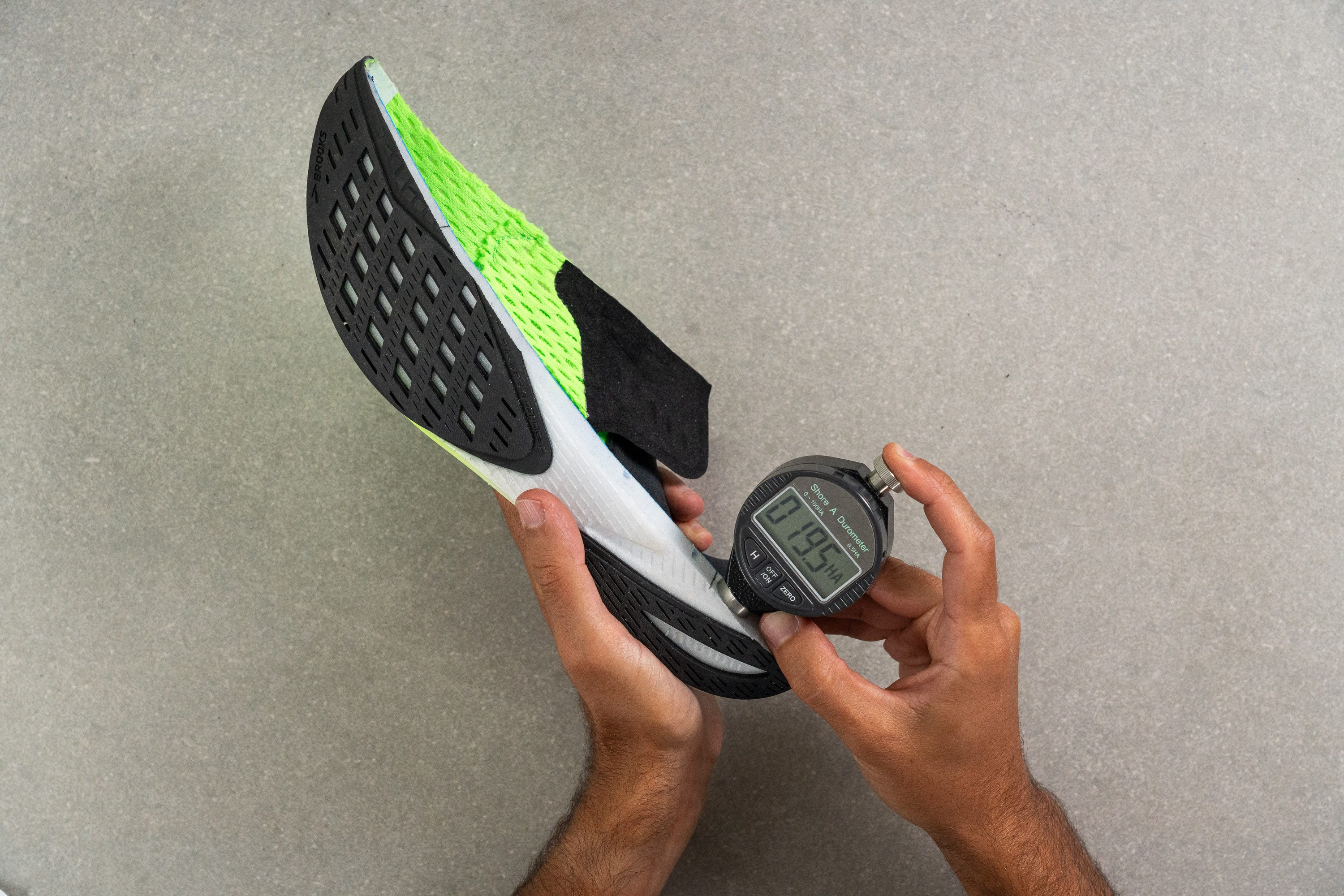
This is significantly softer than our current lab average and means that the shoe’s cushioning does feel decidedly plush underfoot, while at the same time providing an energetic rebound that isn’t overly springy or bouncy.
The “go to support” system of the Hyperion GTS manifests itself as a raised foam sidewall on the lateral side , while the medial side features a glued-on insert made of a firmer, plastic-feeling foam. The combination of these two features gives the shoe some structure and stability that effectively mitigates excessive foot rolling for those with mildly pronating strides in a way that isn’t too obnoxious or apparent.
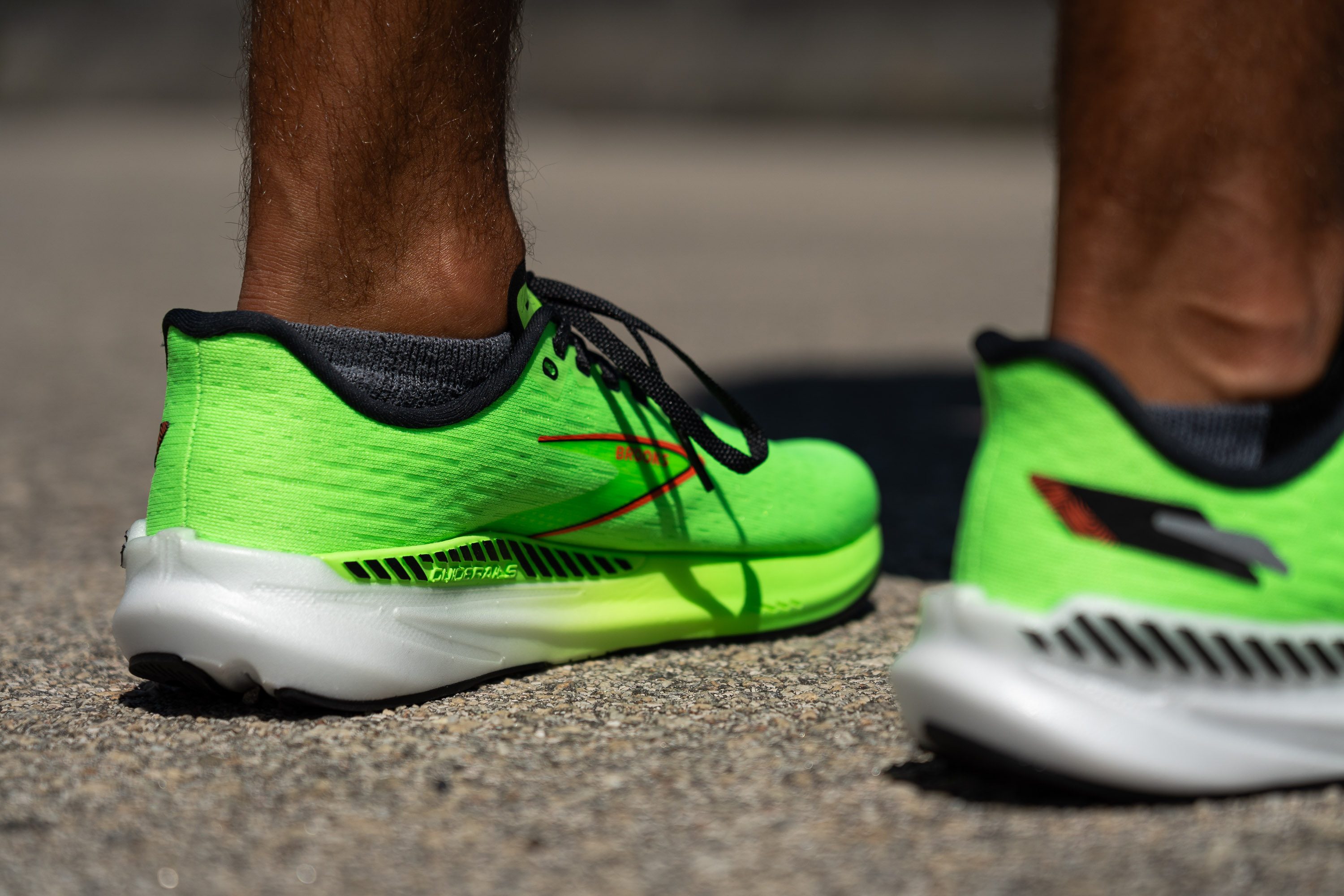
| Hyperion GTS | 18.4 HA |
| Average | 20.4 HA |
Size and fit
Size
Brooks Hyperion GTS fits true to size (84 votes).
Internal length
| Hyperion GTS | 268.0 mm |
| Average | 269.5 mm |
Toebox width - widest part
Using our caliper, we measured the Hyperion GTS’ toebox at its widest point to be 97.7 mm which is right on par with our current lab average. This means that, in combination with the shoe’s forgiving upper mesh, the Hyperion GTS should be accommodating enough for most runners except those with very broad feet. For those runners, we suggest checking out the roomier Saucony Guide 16 instead.

This test follows an older methodology, which is why you don't see recently tested shoes in the chart. Results from different methodologies can not be compared.
| Hyperion GTS | 97.7 mm |
| Average | 98.5 mm |
Toebox width - big toe
At 79.2 mm wide, the Hyperion GTS’ toebox is wider than the average shoe at the big toe. This added room allows our toes to splay out more naturally which meant that we didn’t experience any hotspots while testing the shoe.

This test follows an older methodology, which is why you don't see recently tested shoes in the chart. Results from different methodologies can not be compared.
| Hyperion GTS | 79.2 mm |
| Average | 78.4 mm |
Flexibility / Stiffness
Like its neutral counterpart, the Hyperion GTS is remarkably flexible; requiring only 12.7N of force to bend the shoe 90-degrees after securing it to our workbench. This not only makes the Hyperion GTS more flexible than the average shoe, but one of the most flexible shoes we’ve tested so far.
This is especially notable as stability shoes tend to feel quite rigid and unnatural due to their stride correcting features, whereas the Hyperion allows the foot to flex freely for comfortable landings and toe-offs without sacrificing responsiveness and speed.
This test follows an older methodology, which is why you don't see recently tested shoes in the chart. Results from different methodologies can not be compared.
| Hyperion GTS | 12.7N |
| Average | 28.1N |
Stiffness in cold (%)
We also re-tested the shoe’s stiffness after leaving it in the freezer for twenty minutes; and with only 17.1N of force needed to bend it, the Hyperion GTS is much more flexible than the average shoe even when exposed to the cold. This means that even during the harshest winter runs, the Hyperion GTS remains extremely forgiving and comfortable underfoot.
Becoming only 33.9% more stiff when exposed to the cold, the Hyperion GTS outperforms the average road shoe when it comes to consistency between hot and cold conditions.
| Hyperion GTS | 34% |
| Average | 33% |
Weight
This isn’t just lighter than the average road shoe, but truly makes the Hyperion GTS a diet stability shoe par excellence. Whether we were pushing the pace during tempo sessions or or going for long haul sessions, the shoe felt unburdensome and easy underfoot.

| Hyperion GTS | 8.0 oz (228g) |
| Average | 9.3 oz (264g) |
Breathability
We pumped the Hyperion GTS full of smoke to observe how it vents over a period of ten seconds and gauge how breathable the shoe is. As we can see from the video, smoke immediately begins billowing out of the Hyperion GTS easily and evenly through the shoe’s upper and tongue. This earns the Hyperion GTS a perfect 5 out of 5 for breathability which makes the shoe a great choice for warm summer runs and those living in hot climates.
We backlit a cross section of the Hyperion GTS’ upper to get a better idea of how the shoe allows air to vent. As we can clearly see, the light shines brightly through the many perforations in the upper material, which indicates that the upper mesh isn’t so dense as to prevent good airflow.
This is further corroborated by our closeup shots of the upper mesh where we can see how the densely woven fibers give way to more fine and airy threads within the same braid. These evenly spaced openings provide plenty of channels for cool air to flow through the shoe while allowing heat to vent effectively.
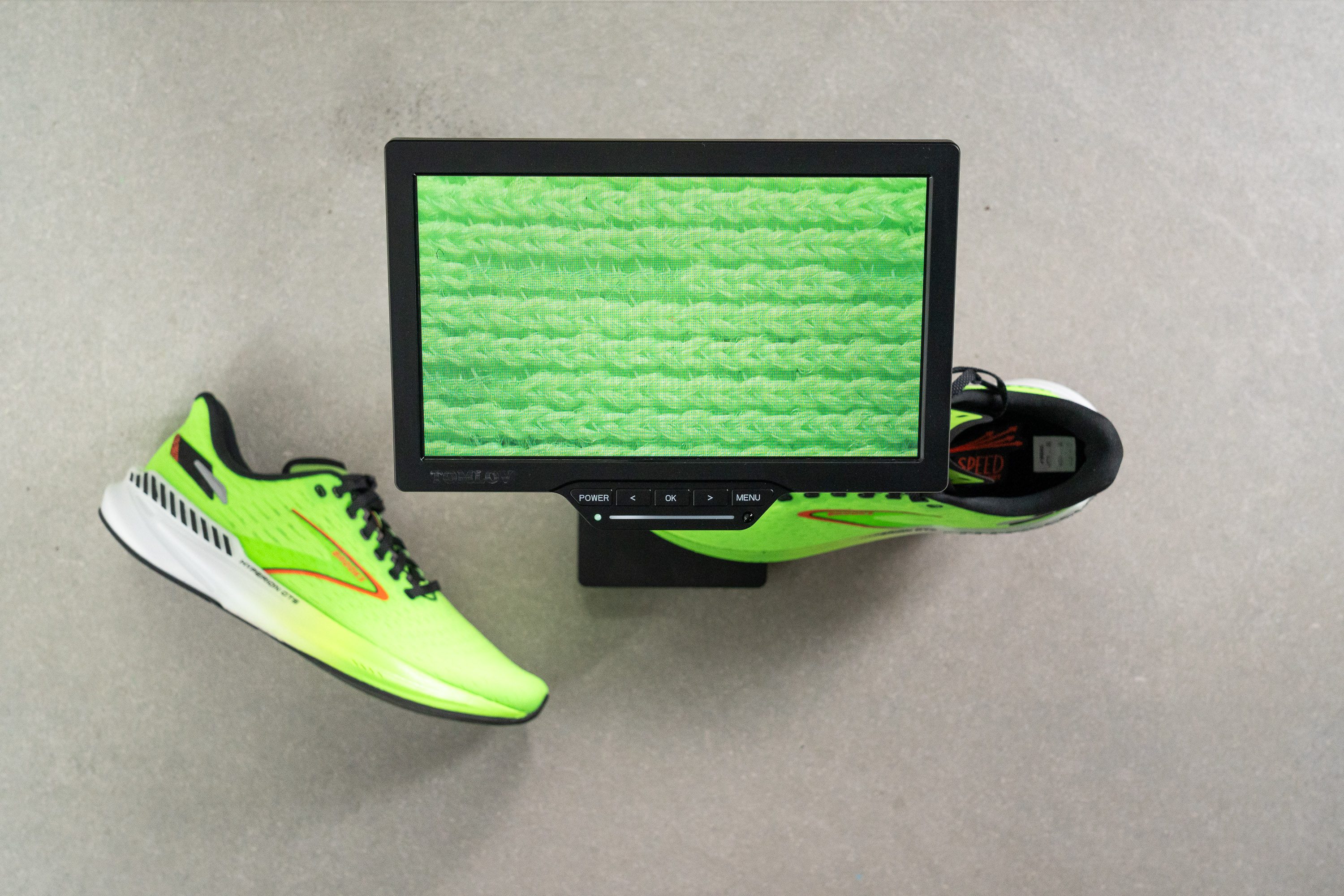
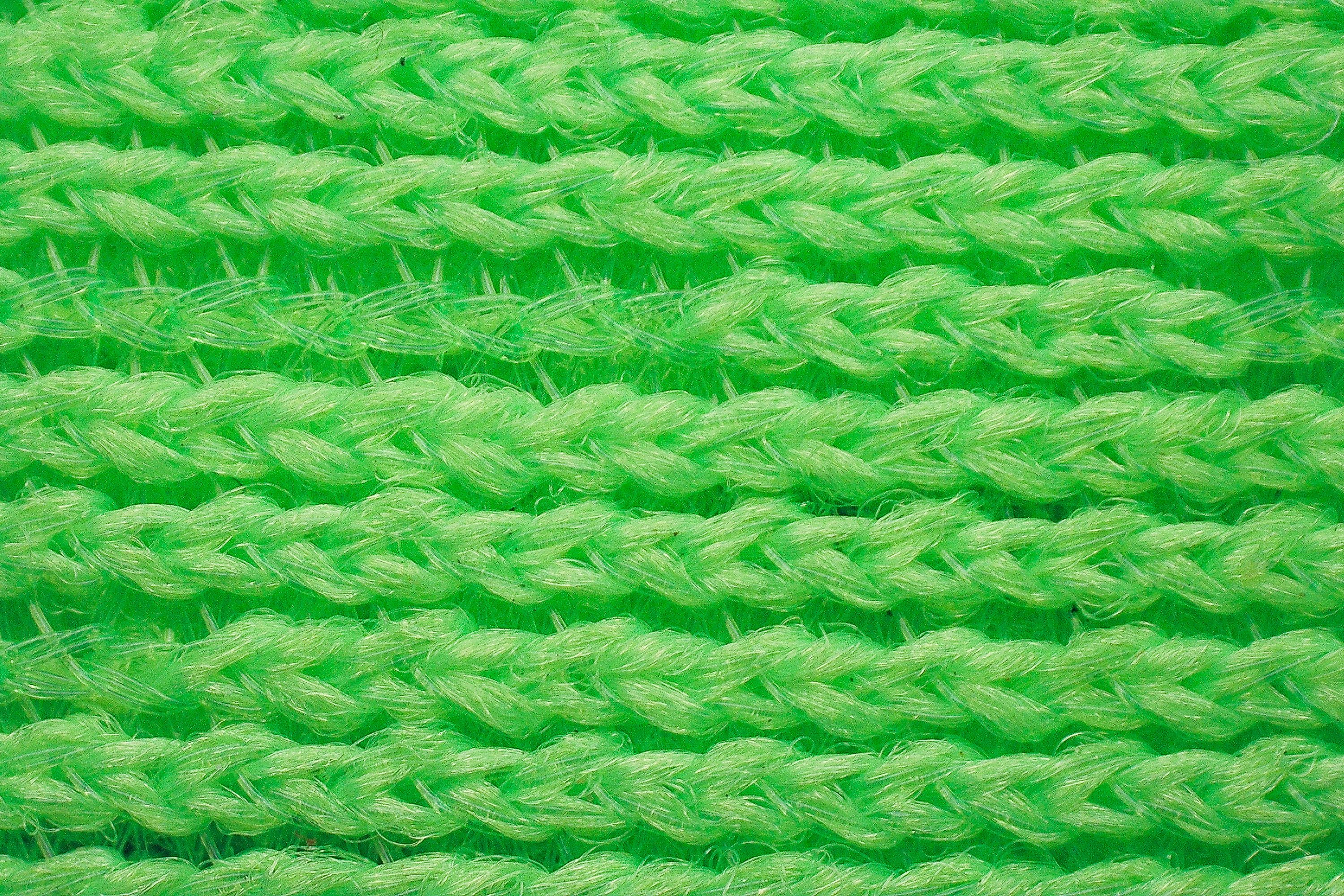
| Hyperion GTS | 5 |
| Average | 3.7 |
Stability
Lateral stability test
We did feel some movement in the shoe when shifting our weight from side to side in the Hyperion GTS, but the flared midsole in combination with the low stack geometry meant that we still felt well grounded with no chance of tipping over.
Torsional rigidity
We encountered a moderate level of resistance when bending and testing the shoe in our hands, leading us to give it a score of 3 out of 5 on our subjective scale for torsional rigidity. This means that while the shoe does conform with the natural movements and contortions of our foot to a certain degree, it does also effectively stabilize our landings by preventing excessive lateral foot movements.
| Hyperion GTS | 3 |
| Average | 3.5 |
Heel counter stiffness
The Hyperion GTS’ heel counter also felt moderately stiff in our hands as we pushed and squeezed on it; leading us to give it a score of 3 out of 5 on our subjective scale. This in conjunction with the shape of the heel cup comfortably holds the foot in place and mitigates excessive side-to-side movement without putting too much pressure on our Achilles tendon. On the other hand we weren’t able to achieve as secure a rearfoot lockdown as we’d like, especially from a speedy shoe, which meant that we did feel some heel rubbing during our test runs.
| Hyperion GTS | 3 |
| Average | 2.9 |
Midsole width - forefoot
We measured the Hyperion GTS’ midsole with our caliper to be 114.3 mm wide at the forefoot. This is slightly wider than our current lab average and means that forefoot strikers have a nice wide base to ensure stable landings and toe-offs.
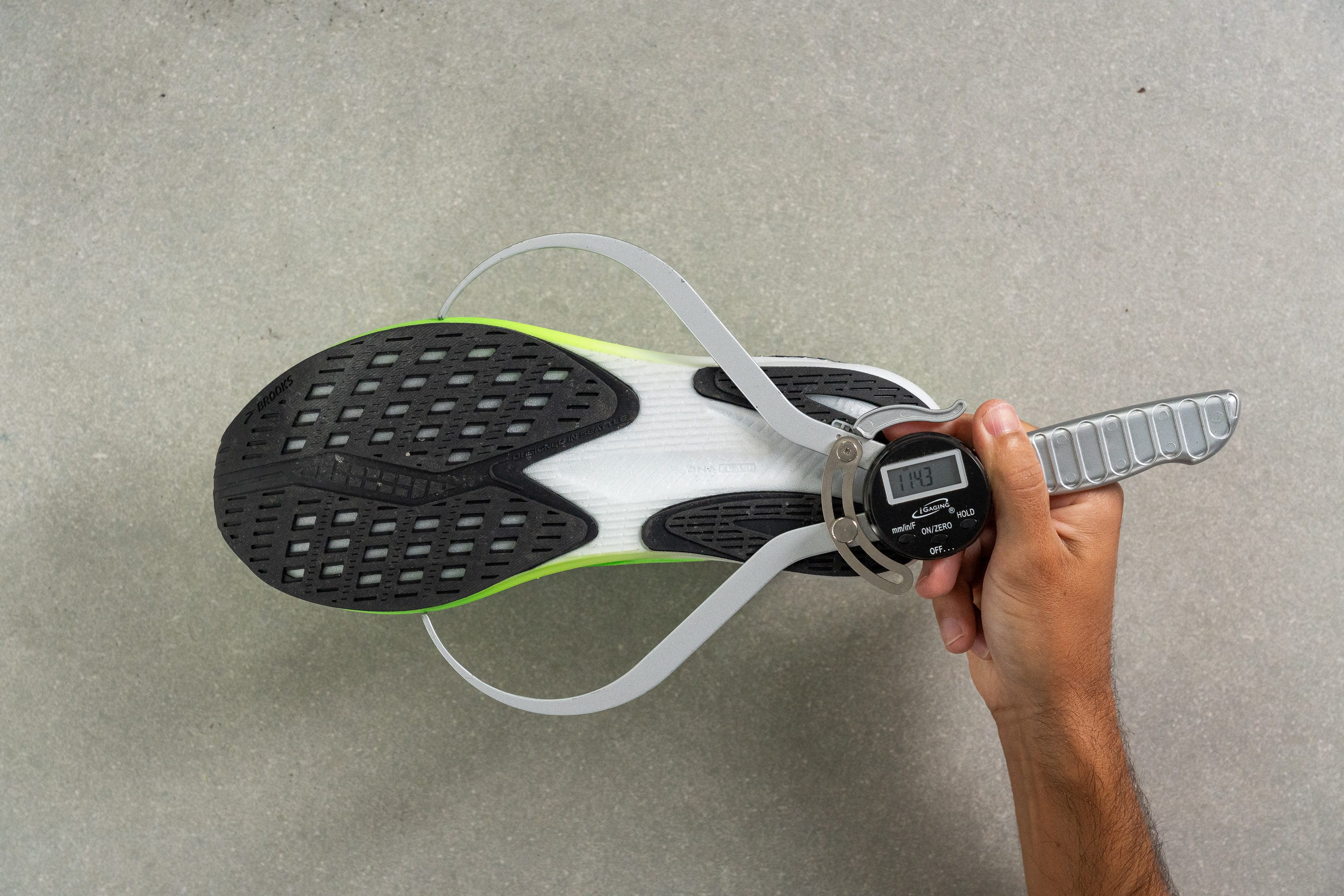
| Hyperion GTS | 114.3 mm |
| Average | 114.4 mm |
Midsole width - heel
Moving down to the heel, we found that the Hyperion GTS’ midsole tapers down quite significantly to only 85.1 mm wide. This narrower than average result, on the one hand, lends the Hyperion GTS an aerodynamic teardrop shaped silhouette that’s conducive to speedwork. On the other hand, however, it does mean that heel striking runners have a more meager landing platform that won’t feel very stable, especially when cornering.

For a shoe with a midsole that’s beefier at the heel, we recommend the slightly heavier ASICS GT 2000 11, or the positively beastly Brooks Beast GTS 23.
| Hyperion GTS | 85.1 mm |
| Average | 90.7 mm |
Durability
Toebox durability
To simulate extreme wear and tear and test the durability of the Hyperion GTS’ toebox, we fired up our dremel to 5K RPM and applied it to the shoe with a force of 3.2N. While the tool’s grinding element was eventually able to bite into the mesh and start shearing away at the material; once the four second test was over, we were surprised to find that the damage wasn’t as catastrophic as we expected. We had barely punched a hole in the toebox, with much of the shoe’s lower layer of mesh holding up pretty well, leading us to give the shoe a toebox durability score of 3 out of 5.
For a shoe that didn’t stand up as well to our dreaded dremel, check out the crater we left in the ASICS Gel Pulse 13’s toebox.
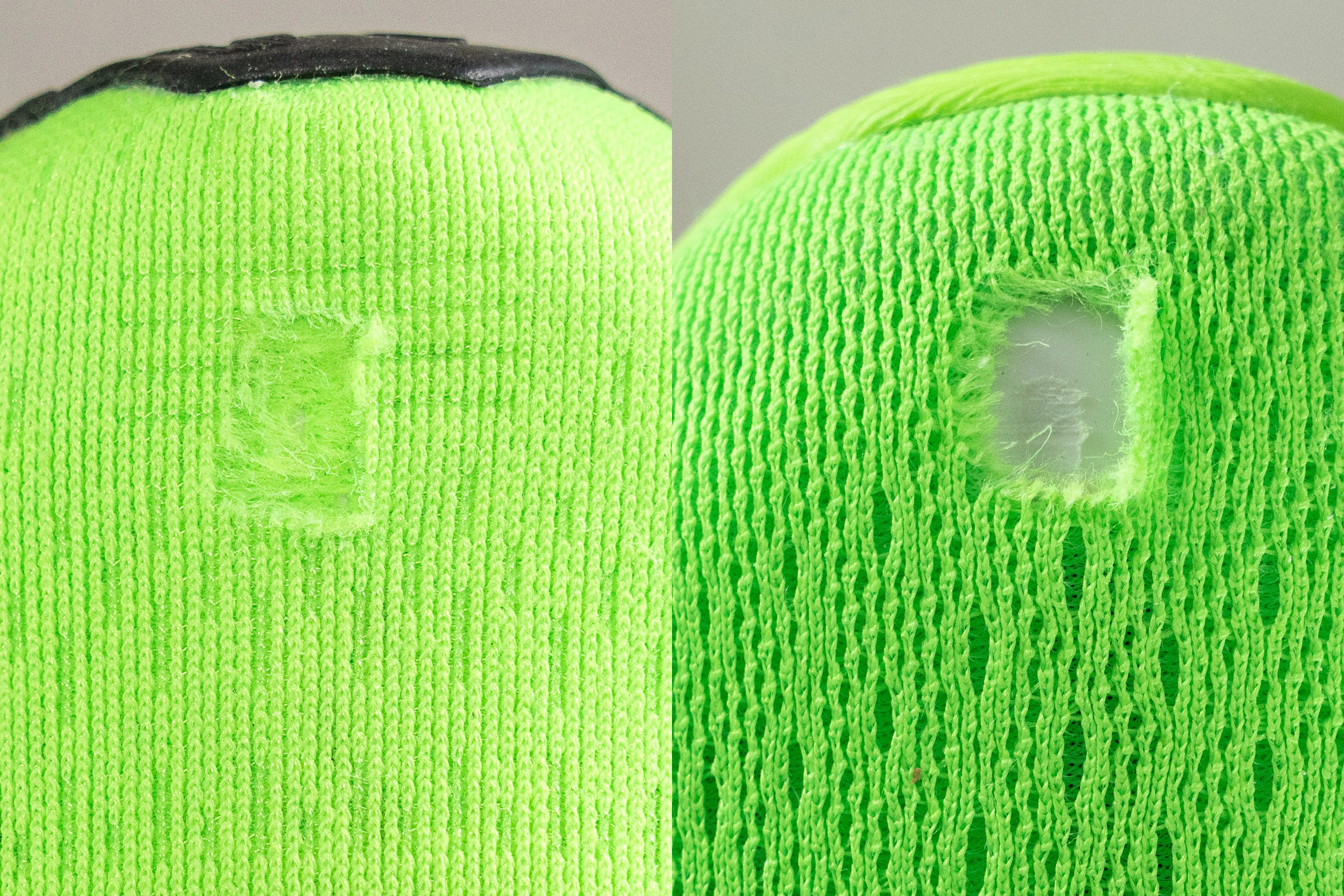
| Hyperion GTS | 3 |
| Average | 2.6 |
Heel padding durability
Wielding the dremel again at the same parameters, we found the Hyperion GTS’ heel collar proved to be even more rough and ready. After four seconds our tool was unable to properly bite into the heel padding; rather it merely skated off the lining material, only leaving a somewhat unsightly scuff while the delicate padding remained relatively intact.
This leads us to give the Hyperion GTS a heel padding durability score of 4 out 5, which means that we can confidently go sockless in the shoe without worrying about incessant friction eventually wearing out the heel collar.

| Hyperion GTS | 4 |
| Average | 3.4 |
Outsole hardness
We pressed our durometer against the HyperionGTS’ outsole to measure how hard it is and got a reading of 73.5 HC, which is significantly softer than our current lab average. This level of hardness means that the shoe is really able to bite into surfaces and provide us with good traction during our runs. On the other hand, the harder a shoe’s outsole material is usually connotes better durability, but this isn’t a hard and fast rule by any means.

For a better understanding of different outsole materials and their properties, check out this in-depth guide that breaks down the materials used by different brands.
| Hyperion GTS | 73.5 HC |
| Average | 79.2 HC |
Outsole durability
To test the durability of the Hyperion GTS’ outsole, we again turn to our trusty dremel. Firing it up to 10K RPM and unleashing it onto the shoe’s outsole with 3.2N of force turned out to be rather anticlimactic, with the tool seemingly only able to vibrate the shoe for twenty seconds.
Once the test was over, we found that we had only lopped off 0.64 mm of material from the Hyperion GTS’ outsole, which is a much better result than our current lab average. This level of durability leads us to safely predict that the Hyperion GTS should easily last 500 miles before showing any significant signs of wear on the outsole.
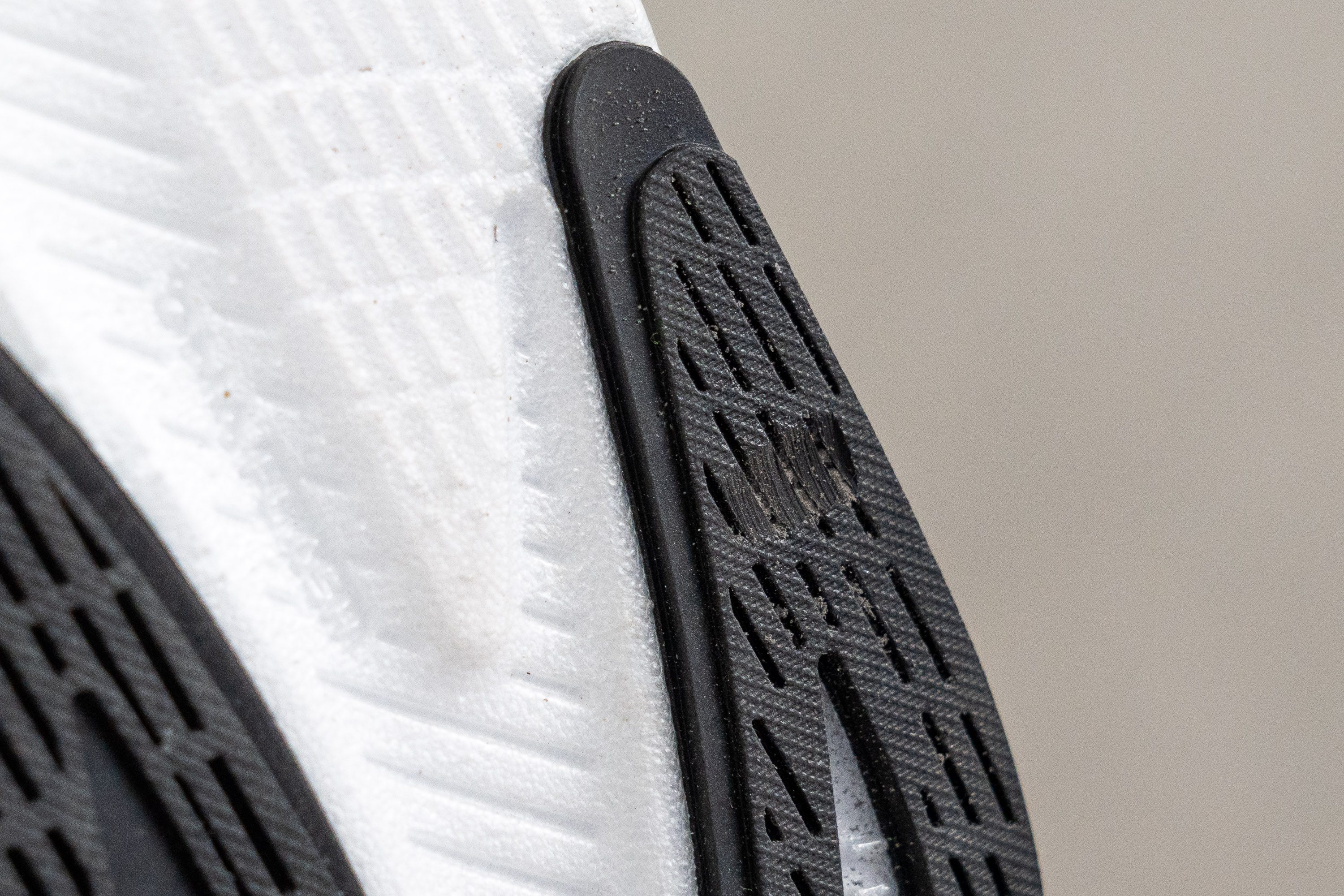
| Hyperion GTS | 0.5 mm |
| Average | 1.1 mm |
Outsole thickness
We measured the Hyperion GTS’ outsole to be 2.9 mm thick according to our caliper. While this isn’t nearly as thick as our current lab average, the result of our previous test proves that there is no need for any unnecessary rubber on the outsole, as it would only serve to add weight to the shoe with no real added benefit to grip or durability.

| Hyperion GTS | 2.9 mm |
| Average | 3.2 mm |
Misc
Insole thickness
The Hyperion GTS’ insole is quite scant compared to our current lab average at only 2.7 mm thick according to our lab average. This also factors into the shoe’s lightweight nature while still leaving us with a landing surface that’s soft enough to nicely complement the plush midsole foam.
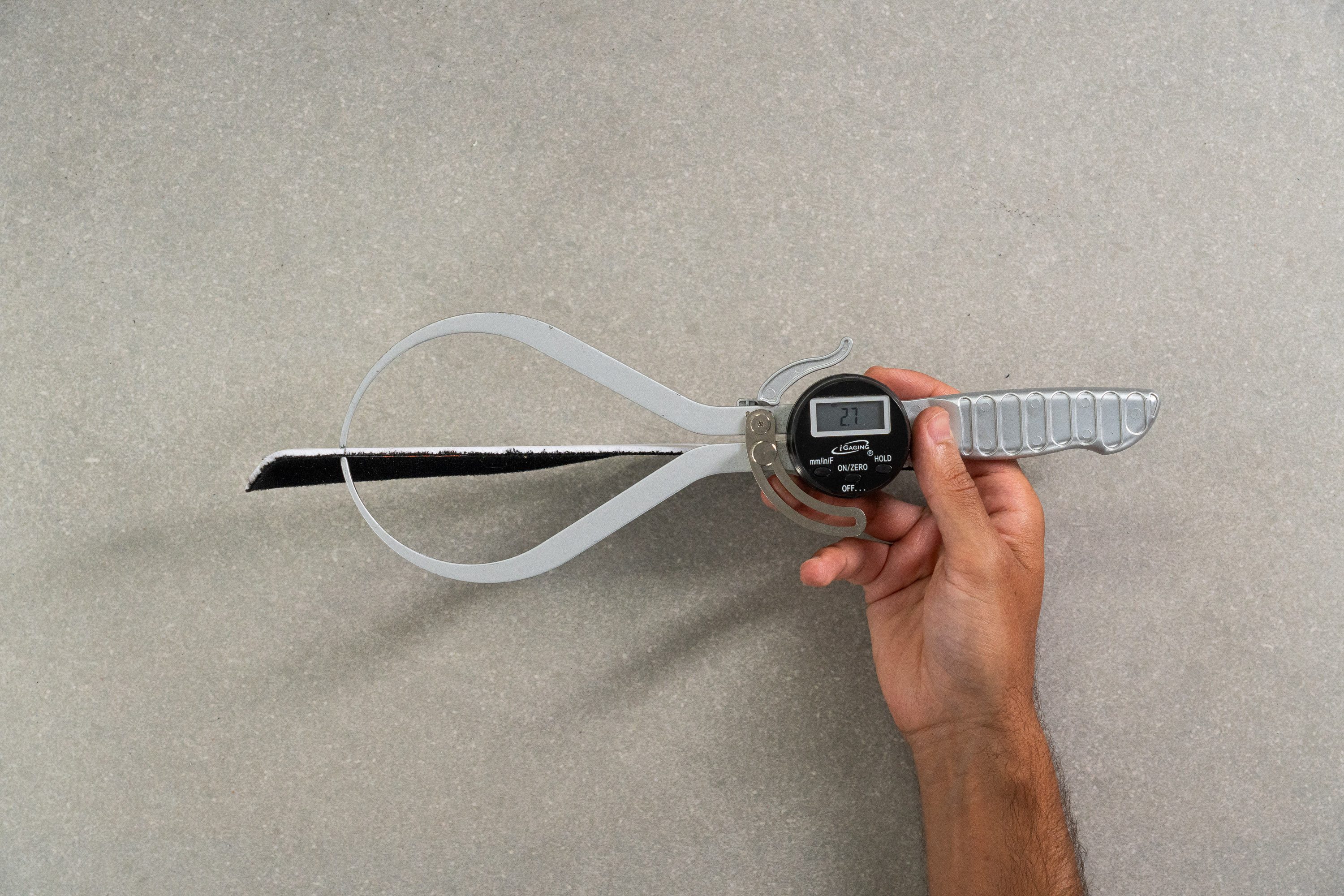
| Hyperion GTS | 2.7 mm |
| Average | 4.5 mm |
Removable insole
The Hyperion GTS’ insole is fully removable, making the shoe compatible with custom orthotics where necessary.
| Hyperion GTS | Yes |
Midsole softness in cold (%)
To see how the midsole reacts to cold conditions, we left the Hyperion GTS in the freezer for twenty minutes, after which we took another durometer measurement and got a reading of 26.1 HA. This is still quite a bit softer than our current lab average and means that the Hyperion GTS will still offer a balanced level of cushioning even during the frostiest winter runs.
With a 42.2% difference in the softness of the midsole between warm and cold conditions, the Hyperion GTS’ midsole isn’t as consistent as the average road shoe. So while the shoe still offers a fair amount of cushioning in the cold, it will certainly feel quite different underfoot depending on what the surrounding weather is like.

| Hyperion GTS | 42% |
| Average | 24% |
Reflective elements
The Hyperion GTS features a small reflective streak at the rear lateral side of the shoe. While this does provide some nighttime visibility, we don’t recommend running on badly lit routes without using additional high-visibility gear.

| Hyperion GTS | Yes |
Tongue padding
Using our caliper, we measured the tongue on the Hyperion GTS to 2.8 mm thick. While this is substantially less plush than the average shoe, it’s still a little more padding than we tend to find in race-ready shoes. This means that the laces do feel somewhat apparent over our instep once laced up and ready to go, but it isn’t uncomfortable enough to be a dealbreaker by any means.
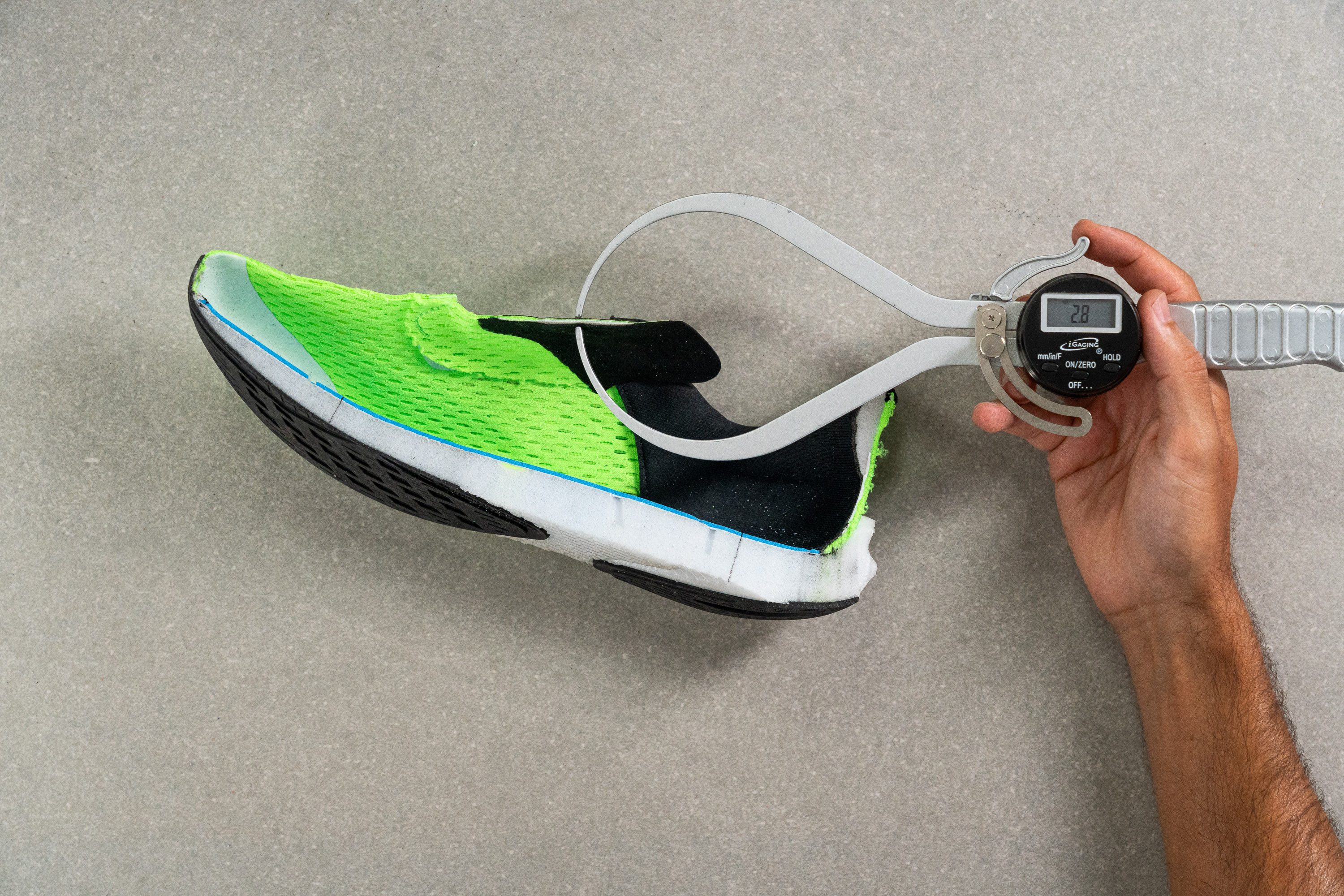
| Hyperion GTS | 2.8 mm |
| Average | 5.8 mm |
Tongue: gusset type
The Hyperion GTS’ tongue is semi-gusseted with an elastic strap that secures part of the medial side to the midsole. This really helps to prevent the tongue slipping from side to side, which is one of the few nitpicks we had with the shoe’s previous non-stability iteration; the Hyperion Tempo.

| Hyperion GTS | One side (semi) |










































